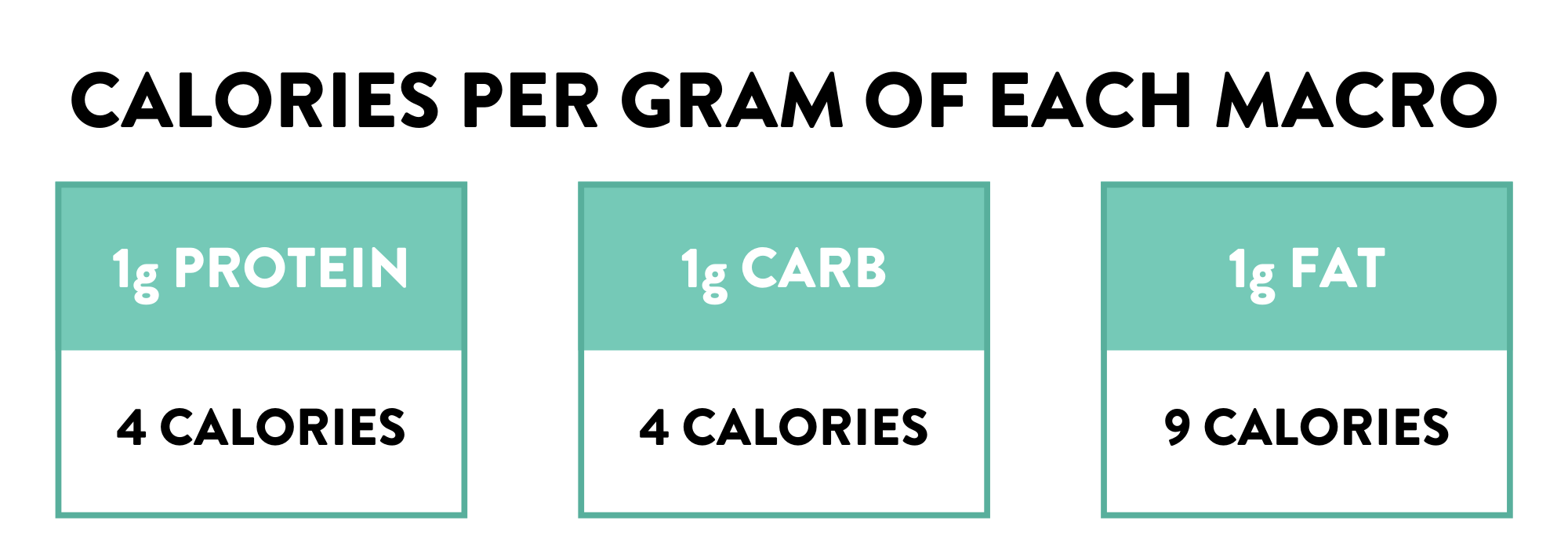
When you set a goal to lose weight, the next question is often “how long will it take me to reach my weight-loss goal?”, right?
Would you believe me if I told you about half of American adults want to lose weight [1]? Many of these people spend a lot of time chasing that goal without the support or guidance they need to get to their end result.
Part of this could be due to the challenges that come along with creating new habits and retraining past dieting beliefs. But at the end of the day, many people chase a weight loss goal without success because they don’t know how long it will take.
After all, no one wants to diet forever.
At WAG Nutrition, we set expectations with our clients right from the get-go so we’re on the same page about how to reach their goals, how we’ll measure progress along the way and how long it will take to get there.
Advertisement
How Long Do I Have To Count Macros?
If you’re wondering how long it takes to see results counting macros, the short (not so black-and-white) answer is “it depends.”
There are many things that can impact how long it will take for you to start seeing weight loss once you start tracking macros like…
- Consistency hitting your macro targets
- How much weight do you have to lose
- Activity frequency, intensity and style
- Other lifestyle factors
We’ll tackle these in more detail in a bit. If you’re dying to know what it really takes to get lean? Here’s what you need to know off the bat.
Calculating Rate of Weight Loss
A safe and sustainable rate of weight loss is about 1-2lbs/week [2]. Men tend to lose weight at a faster rate than women and as you get leaner (no matter your gender), weight loss also tends to slow down [3].
Here’s how that may break down time-wise:
Advertisement
- If you’d like to lose 10 pounds, it could take 5-10 weeks (or more) to reach your goal.
- If you want to lose 20lbs, it could take 10-20 weeks (or more) to reach your goal.
Although this isn’t a hard and fast rule, it is a start when setting realistic expectations for your weight-loss journey. At the end of the day, the most important piece to the weight loss puzzle is that you need a nutrition plan.
We love counting macros at WAG Nutrition because it gives a reliable and measurable way to assess what works for your body. From there, we can assess your rate of progress and how long it will take you to lose weight with more exact and reliable data.
Does Counting Macros Actually Work?
Let’s break this down a bit…
At its most basic level, weight loss occurs when you burn more calories than you eat. This can be managed with nutrition and activity level. WAG nutrition coaches have all the tools and knowledge to understand what your individual balance should be. They can take the guesswork out of this part of the process.
H4: Macros for Optimal Performance
Advertisement
Finding the right balance of macros can help with your energy, sleep, performance, stress management, recovery, hunger signals, hormone health, and adherence to your plan.
When it comes to athletic performance, your macro breakdown can impact your energy levels and help you exercise more effectively and efficiently based on your favorite way to move.
A triathlete may have different macro needs than a Crossfitter, and a bodybuilder may have different needs than a yogi. For example, a CrossFitter and bodybuilder may need higher protein for muscle recovery and carbohydrates for quick workout energy. A yogi or marathoner may need more healthy fat for more sustained energy through a flow or race.
Using specific macro targets to support your exercise routine is one of the biggest reasons macro tracking can be so successful. When you optimize your exercise output, you’re usually optimizing the way your body burns energy which can result in leaner body composition.
Is it Better to Count Macros or Calories?
When you count macros, you indirectly count calories. There are four calories in every gram of carbohydrate, four calories in every gram of protein and nine calories in every gram of fat (dig into this more HERE).
Advertisement

So, if you’re wondering “how long does it take to see results counting macros”, the sooner you can get yourself consistently hitting a ratio of carbs, fats and protein that support your goals, the faster you’ll see progress.
Getting the right balance of daily protein, fat and carbs to fuel your body and satisfy your palate is where the art of macro setting comes into play. Because carbs, dietary fats and protein all play different roles in your body, the ratio of each can impact how you feel in the gym, in your day-to-day and how your body drops (or doesn’t drop) weight.
So, if you buy that macros are a more precise way of counting macros and can help you get to your goals faster, what happens if it just feels like too much right now?
What to Do If Macro Counting is Overwhelming
Macro counting It is highly detailed and requires planning and patience to hit your targets on a regular basis. If you can get there, it is a tried and true approach to weight loss and you will undoubtedly see many other positive results because of it.
Advertisement
If you are brand new to measuring, tracking and/or weighing your food and the idea of counting all three macros feels like too much, it may take a little bit longer to get to your weight loss goal but don’t let that discourage you. We have some ways you can ease into it so it feels fun, and motivating and you’ll start to see progress towards your goals.
These are presented in “most effective” to “least effective” in terms of the rate of weight loss.
- Still count your macros but use cups and spoons instead of a food scale
- Count calories and protein
- Count calories
Keep in mind that you’ll see results faster if you start with something realistic that you’ll stick to than overwhelming yourself and throwing in the towel.
Let’s break these down further:
Using Cups and Spoons instead of a Food Scale
For many people, counting macros isn’t the tricky part, it is the whole “putting food on a food scale and using grams/oz” thing that starts to feel like too much.
Advertisement
If you want to hold yourself accountable to intake and give macro counting a go but aren’t quite ready for a food scale, you can use cups and spoons to measure the food you eat. From here, you’ll put your food in a tracking app and let it do the math for you!
Although cups and spoons aren’t quite as accurate as a food scale, it is still a great starting place when it comes to tracking intake and holding yourself accountable to portion size.
Counting Calories and Protein to Lose Weight
Studies show that if you control calories and eat adequate protein, the ratio of carbs and fats can be based on your personal preference, training style and what the day throws at you.
If counting all three macros feels like a bit much to start, we recommend aiming for a protein target while staying within a calorie range that helps you reach your goals whether they’re weight loss or muscle gain. (Wondering how much protein you need? A coach can help!)
We’ve found that protein tends to be the trickiest thing for our clients to hit if they’re not intentional with it. Protein helps you maintain muscle in a cut and has the highest thermic effect of food which means your body works hard to digest it (read: more calorie burn here, too!).
Advertisement
Counting Calories for Weight Loss
At the very least, counting calories to hold yourself accountable for overall intake is a great place to start.
That being said, putting all your focus on a calorie deficit can be a slippery slope - going too far too fast can be detrimental in many ways. More of a deficit is not always better and the 1200 calories a day baseline we’ve been taught for years is a no-go for most of us if we want to give our bodies what they need to thrive and not only lose weight but keep it off long-term.
You need enough energy, nutrients and all the other great things that food provides in order to keep your body going. Not to mention the energy needed for optimal brain function and for physical performance. Thus, it is critical to find a balanced deficit where you can manage hunger, have enough fuel for workouts, and still function well day-to-day.
We often find that counting calories, along with slow and progressive habit building and behavior changes around food and nutrition, is a great way to start a weight-loss journey for newer dieters. Over time you can make changes and adjustments along the way and may find yourself counting macros in no time.
Whether you are tracking calories only, calories and protein, all three macros, or something else entirely, the most crucial thing that will help you achieve your weight loss goal ASAP is CONSISTENCY!
Advertisement
Keep tracking your meals, keep exercising, and keep your eye on the prize. One slip-up won’t sabotage your whole journey, but many slip-ups will make the journey longer (and a lot more frustrating!). The next time you are tempted by a night out or an extra helping of your favorite food, ask yourself if this decision is worth adding an extra day or week onto your timeline.
So, aside from adherence to the plan, what other things might impact the timeline for weight loss?
What Else Influences Weight Loss Besides Food?
Being in a consistent calorie deficit and adhering to your plan are the two big factors if you’re wondering how long it takes to see results counting macros. But of course, there are other things to keep in mind when you set off to start this process…
Body Composition and Weight Loss
If you have more muscle on your body, you likely have a higher metabolic rate, which means you burn more calories all day, every day. This is why strength training can play such a key role in creating and sustaining long-term results and why leaner people with more muscle can often eat more without putting on weight.
This is also the reason we see gender playing a role in the rate of weight loss. Generally speaking, men have higher muscle mass and lower fat mass than women, giving them a speedier pathway to achieving weight loss results.
Advertisement
That being said, people with more weight to lose initially lose weight faster than people who are already lean. Along those same lines, people who are newer to strength training will also see faster strength gains than well-trained individuals [4].
How Does Sleep Impact Weight Loss?
Getting sufficient sleep can help you reach your fitness, body weight, body composition and athletic goals.
Lack of sleep can increase hunger, reduce your metabolism, make you more inflamed (read: experience more pain and decreased recovery), less motivated to work out, AND may actually make you consume more calories throughout the day [5]!
To sum it up: You can be doing everything right in the gym and in the kitchen, but if you are not addressing sleep issues, you will only get so far.
Here are some of our favorite tips to get more sleep!
Advertisement
Stress, Hormones and Weight Loss
High-stress levels can impact hormones - cortisol especially - and have a whole host of negative effects throughout your body, including a hard hit to your weight loss progress [6]. Read this article for a deep dive into why this is so impactful and how you can combat the influence stress can have on your results.
Other Factors that Can Impact Rate of Weight Loss
Things like medications, medical conditions, family history and genetics are just a few of the other factors to take into account when anticipating how long it will take to lose weight.
Last but not least, accountability and help from a professional! Going it on your own, playing the guessing game and grabbing onto the next shiny diet tread is TIRING. Most of us have been there before. At WAG Nutrition, we work with you to find the plan that will work for you. Then, we hold you accountable through weekly check-ins and messages and shifts in your plan as your body and goals change.
To make this very long story short, your timeline to reach your results will vary wildly depending on each one of the factors we cover here. Your best approach is to buckle in, learn to enjoy the process and get a little help if you want to offload the decision-making pressure and questions to someone who has been doing it for a while. No matter what, you will come out on the other side with much more than just your weight loss results!
References:
- Martin, C., Herrick, K., Sarafrazi, N., & Ogden, C. (2018). Attempts to lose weight among adults in the united states, 2013-2016. NCHS Data Brief No. 313. Retrieved from https://www.cdc.gov/nchs/products/databriefs/db313.htm
- McDonald, L. (2005). A Guide to Flexible Dieting: How Being Less Strict With Your Diet Can Make it Work Better (1st ed.). Thornhill, UT: Lyle McDonald.
- Helms, E., Valdez, A., & Morgan, A. (2015). The Muscle and Strength Pyramid Nutrition. Eric Helms.
- Helms, E., zinn, C., Rowlands, D., & Brown, S. (2014). A systematic review of dietary protein during caloric restriction in resistance trained lean athletes: a case for higher intakes. Int J Sport Nutr Exerc Metab., 24(2), 127-38. doi: 10.1123/ijsnem.2013-0054
- Greer, S. M., Goldstein, A. N. Walker, M. P. (2014). The impact of sleep deprivation on food desire in the human brain. Nat Commun., 4, 2259. doi: 10.1038/ncomms3259
- Roberts, C., Campbell, I., & Troop, N. (2014). Increases in weight during chronic stress are partially associated with a switch in food choice towards increased carbohydrate and saturated fat intake: Stress food choice weight increase. European Eating Disorders Review, 22(1), 77–82. https://doi.org/10.1002/erv.2264
Anna Winton
Schedule a Free Intro Call
Working Against Gravity has led the macro tracking and health space for over a decade. Our team doesn’t just understand the science of nutrition—we’ve spent years mastering the art of tailoring it to fit your life. That means no cookie-cutter plans, just real strategies that have worked for over 30,000 people.
Schedule a free call with our team to learn how working with a 1-on-1 WAG coach will help you reach your goals.



